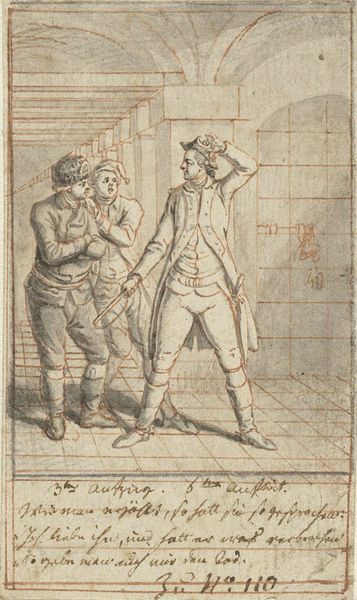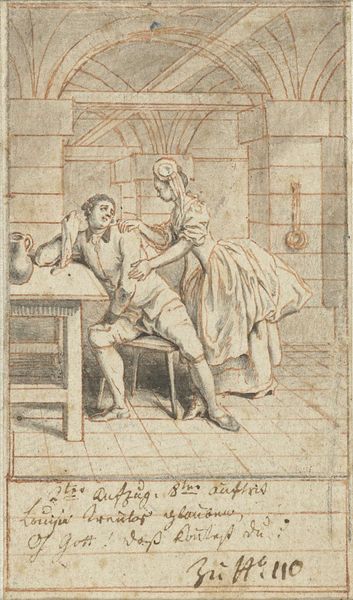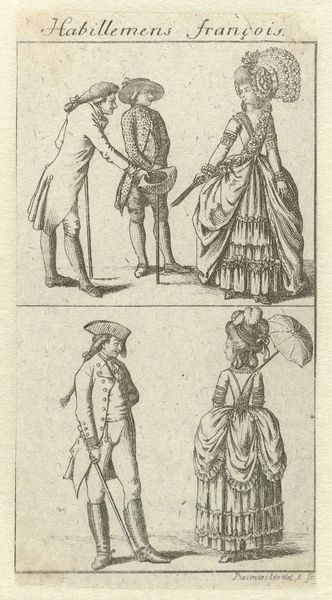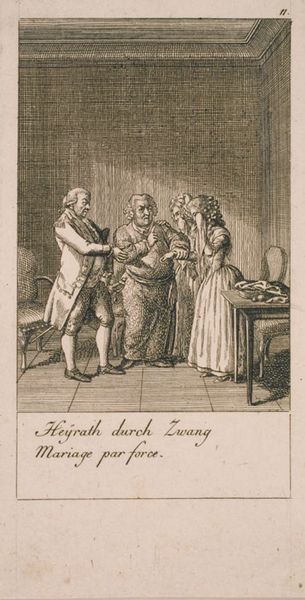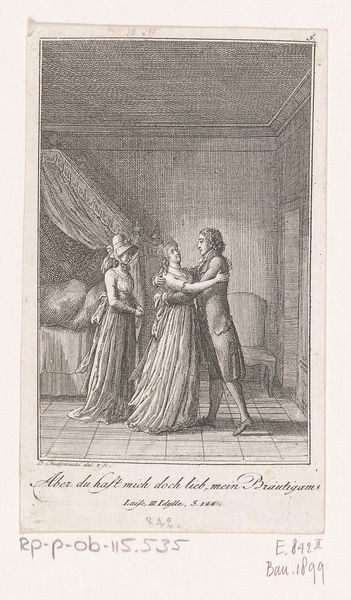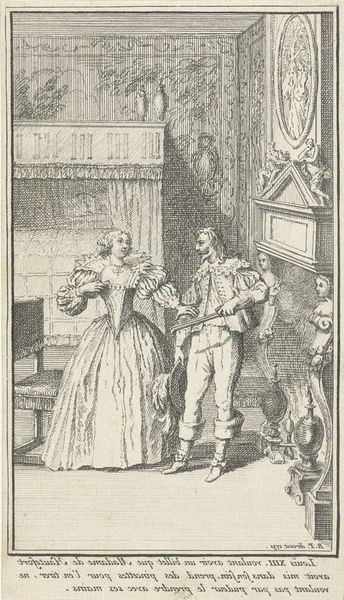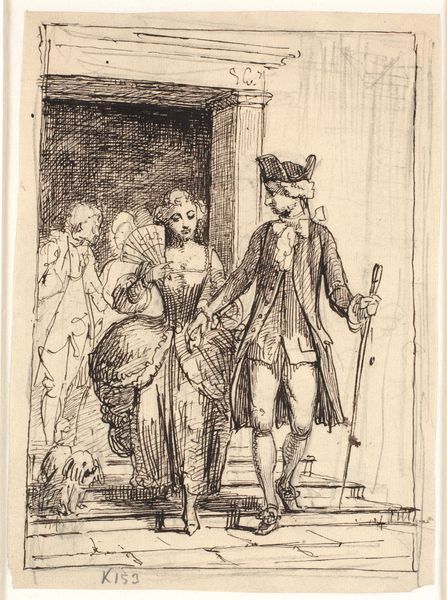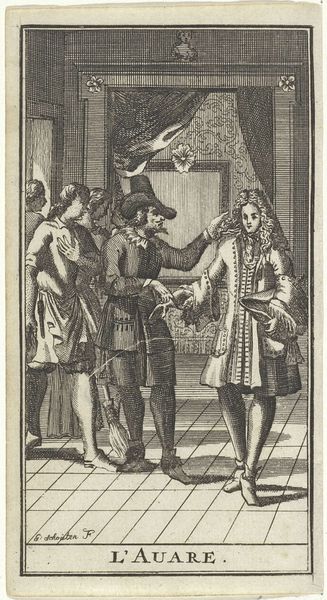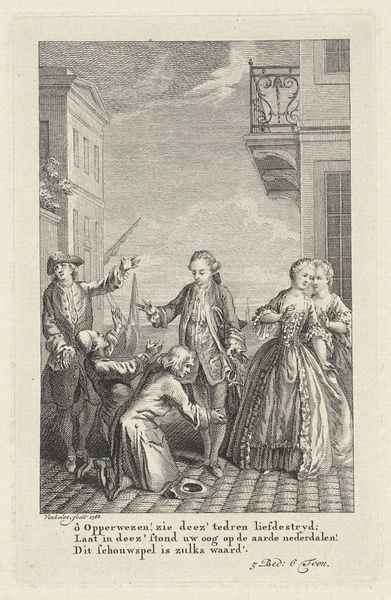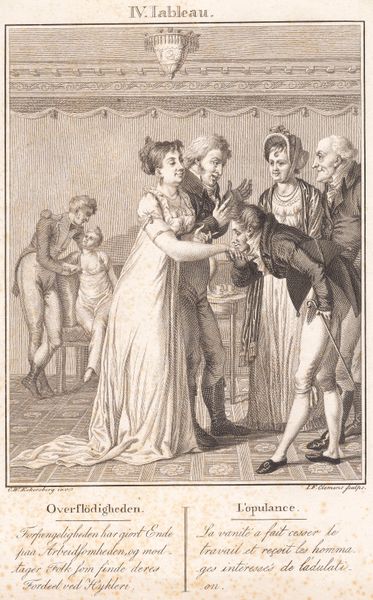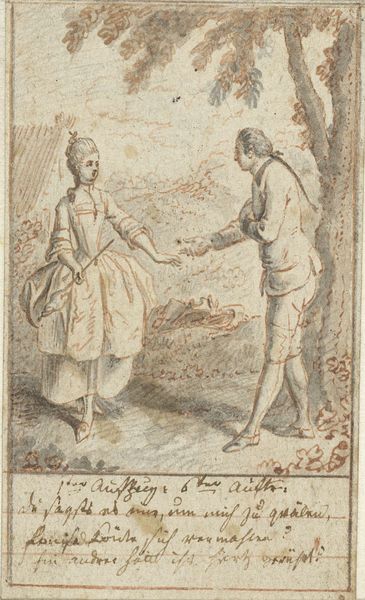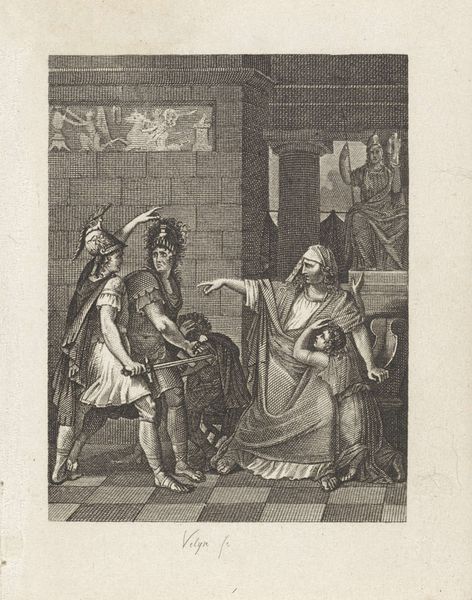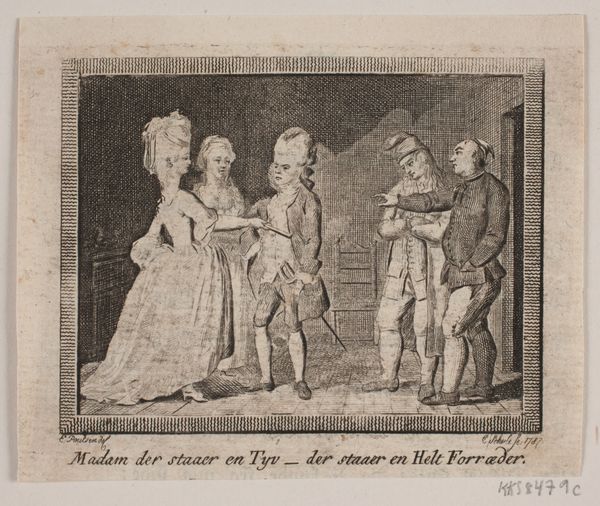
Louise en haar vader Johann Ludwig bezoeken Alexis in de gevangenis 1770 - 1775
0:00
0:00
Dimensions: height 90 mm, width 52 mm
Copyright: Rijks Museum: Open Domain
Curator: Welcome to the Rijksmuseum. We’re standing before Daniel Nikolaus Chodowiecki's delicate drawing, "Louise en haar vader Johann Ludwig bezoeken Alexis in de gevangenis," created between 1770 and 1775. Editor: Immediately, I'm struck by the palpable sense of grief and separation rendered in these simple lines and subdued colours. The architecture looms overhead as the characters’ expressions become the focal point. Curator: Indeed. Chodowiecki was known for his engagement with Enlightenment ideals and social commentary, often using his art to critique power structures. The piece touches on themes of familial duty versus personal freedom, popular during the rise of Romanticism. Editor: Notice the father covering his eyes. Is it shame? Sadness? The minimal use of colour enhances the emotional weight. Curator: The emotional resonance of the artwork also points towards Romantic ideals. These elements often aligned with moralizing narratives popular at the time. We see how personal suffering becomes almost like public theatre within these family encounters. Editor: I see it. The light, mostly grayscale shading, contrasts starkly with the figures, particularly the daughter. There's a drama that emanates simply through composition—notice how she and the imprisoned Alexis are connected physically through clasping of hands. It accentuates their bond within the bleak prison setting. Curator: It's Chodowiecki offering social critique, questioning the human cost of societal justice. It allows for broader reflection on individual liberties during an era of revolution. Editor: I think analyzing the balance between light and shadow offers another lens. It illuminates the interior psychology of each figure – hope perhaps. Curator: Agreed. Through the dialogue and the aesthetic choices in this intimate portrayal of a family visiting their imprisoned relative, Chodowiecki invites us to contemplate justice, family bonds, and the complexities of morality. Editor: A powerful message rendered beautifully and starkly.
Comments
No comments
Be the first to comment and join the conversation on the ultimate creative platform.
